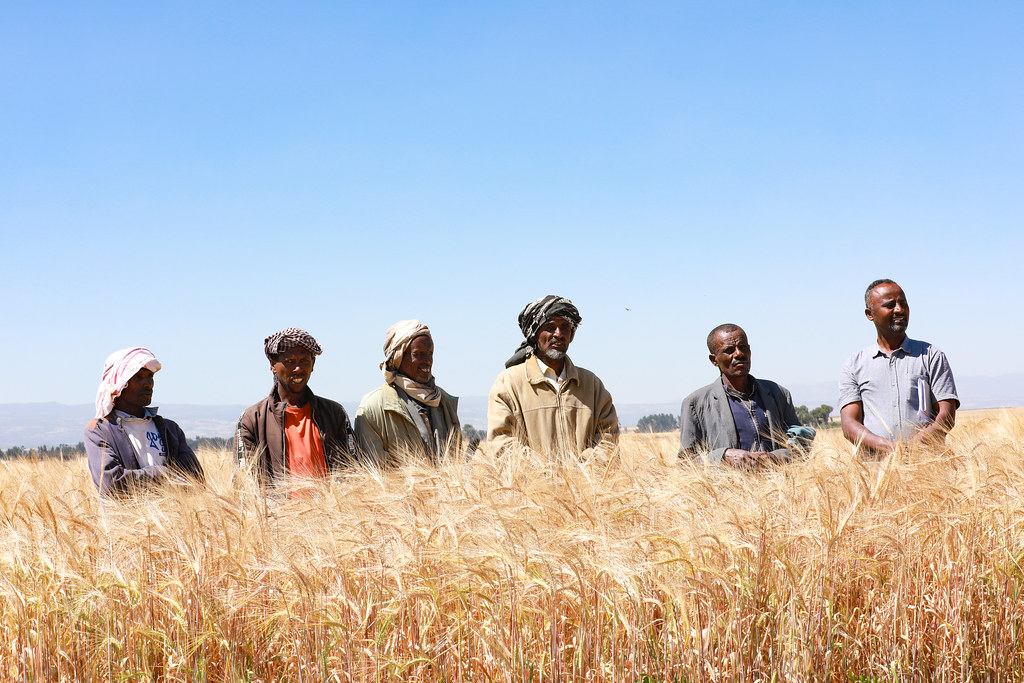Quality barley seeds and linkages with breweries unlock better incomes for Ethiopian farmers
Assefa Negash, a farmer and secretary of the Bekume Oyora Seeds Growers’ Cooperative has long faced difficulties in getting high-quality malt barley seeds. He cultivates the crop jointly with members of his cooperative group on a 3.3-hectare piece of land in Goba District of the Bale zone in Ethiopia’s Oromia Region.
‘In the past, to grow our malt barley crop, we would conserve seeds from our yields or even buy them from someone in the neighbourhood,’ Assefa says, ‘The resulting yield from these kinds of seed sources were always unsatisfactory. But now with the ‘HB-1964’ variety of seed and training by the Africa RISING project, we are getting better yields that we could only dream of in the past years and are equally well trained in producing quality seed for the subsequent cropping seasons! For example, this year, we are expecting to produce 15 tons of basic seeds.’ he adds.
Through the Africa RISING project, the International Center for Agricultural Research in the Dry Areas (ICARDA) and the Ethiopian Institute for Agricultural Research (EIAR) have been working to introduce improved malt barley varieties that can serve as sources of raw material to support Ethiopia’s growing market for malt, especially the beer brewing industry. Since 2017 six high-yielding and pest-resistant varieties of malt barley (Bahati, Bekoji-1, HB1964, Holker, IBON-174 and Sabini) have been introduced and evaluated jointly with farmers in the highlands of Amhara, Tigray, SNNP and Oromia regions of Ethiopia. These varieties have demonstrated significant potential in helping meet growing domestic demand and substantially diversifying the sources of income for farmers. The total number of beneficiaries in Africa RISING operational areas as a result of producing malt barley from 2017 to 2020 reached 5,362 households.
This film profiles how the collaborative efforts of Africa RISING and its partners are reinvigorating the hitherto flailing malt barley production sector in the Ethiopian highlands. Ethiopia is the second-largest barley producer in Africa contributing nearly 25% of the total crop production in the continent. In Ethiopia, the crop is the fifth most important crop in terms of area coverage after teff, maize, wheat and sorghum. Barley grain is used for human food and malt production and the straw is used for livestock feed and house construction in rural areas. Although the country has a considerable number of breweries, malt barley produced locally has been by far low in quantity and quality compared with the requirement by the factories.
Bale zone in the Oromia Region is one of the Africa RISING project’s operational areas, where wheat and barley production are dominant due to its favourable weather, fertile soil, and adequate rainfall. Smallholder farmers in the area have organized themselves as seed multiplication cooperatives and begun to produce malt barley in a cluster farming approach. However, accessing quality seeds timely, at the right place and at an affordable price remains a challenge for the farmers in the area.
Africa RISING and its partners are working to address these problems by collaborating with farmers in cooperative unions and primary cooperatives to build their capacity to produce and distribute improved barley seeds. The project team is also working to improve linkages between the cooperatives and the private brewery companies in the country to improve the farmers’ market access.





